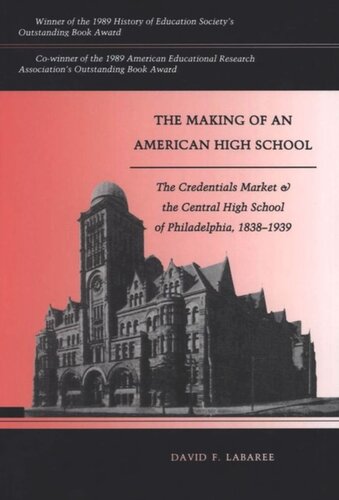

Most ebook files are in PDF format, so you can easily read them using various software such as Foxit Reader or directly on the Google Chrome browser.
Some ebook files are released by publishers in other formats such as .awz, .mobi, .epub, .fb2, etc. You may need to install specific software to read these formats on mobile/PC, such as Calibre.
Please read the tutorial at this link: https://ebookbell.com/faq
We offer FREE conversion to the popular formats you request; however, this may take some time. Therefore, right after payment, please email us, and we will try to provide the service as quickly as possible.
For some exceptional file formats or broken links (if any), please refrain from opening any disputes. Instead, email us first, and we will try to assist within a maximum of 6 hours.
EbookBell Team

0.0
0 reviewsHow have the educational goals of American public high schools changed over time? What can the experiences of one secondary school tell us about the problems they all face today? This book provides an analytical history of the origins and development of Central High School, the first high school in Philadelphia and a model for many subsequent institutions. Using Central as a case study, David F. Labaree argues that the American public high school can be viewed as the product of both democratic politics and capitalist markets: although it was originally intended to produce informed citizens for the new republic, the high school, with its meritocratic emphasis, instead became a vehicle for conferring status on the select group that was educated there. The struggle between these two goalsone leading to political equality and the other reinforcing economic inequalityhas characterized its history ever since, says Labaree.
According to Labaree, Central was founded as a selective middle-class school with broad moral and political aims. However, the school’s success in providing advantages for its graduates led, during the 1880s, to growing public demand for secondary education. The resulting rapid expansion of Centrals’ enrollment and the establishment of other public high schools eventually undermined the selectivity that had made its credentials so valuable and enabled it to flourish. This in turn spurred the school to protect its credentials by introducing tracking, with a new dual curriculum for college-bound and non college-bound students.
Labaree contends that this compromise between access and exclusivity does not work: it fails to serve the public interest because of the attenuation of the school’s democratic goals, and it fails to serve private interests because of the declining value of the credentials it bestows. In order to achieve its original democratic goals, he argues, the public high school must abandon its longstanding links to the market.